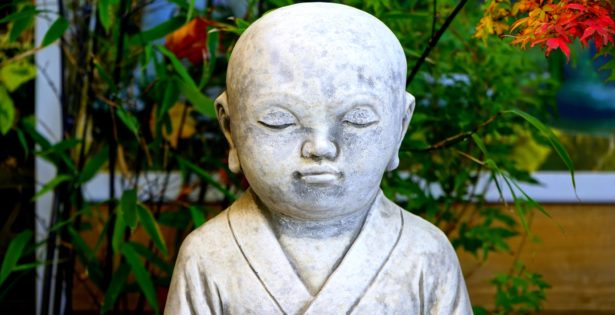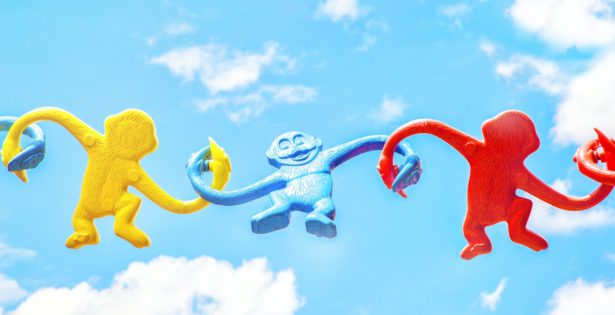WP_Query Object
(
[query] => Array
(
[category__in] => Array
(
[0] => 67
[1] => 23
[2] => 66
[3] => 65
[4] => 26
)
[post__not_in] => Array
(
[0] => 8656
)
[posts_per_page] => 50
[ignore_sticky_posts] => 1
[orderby] => desc
[_shuffle_and_pick] => 3
)
[query_vars] => Array
(
[category__in] => Array
(
[0] => 67
[1] => 23
[2] => 66
[3] => 65
[4] => 26
)
[post__not_in] => Array
(
[0] => 8656
)
[posts_per_page] => 50
[ignore_sticky_posts] => 1
[orderby] => desc
[_shuffle_and_pick] => 3
[error] =>
[m] =>
[p] => 0
[post_parent] =>
[subpost] =>
[subpost_id] =>
[attachment] =>
[attachment_id] => 0
[name] =>
[pagename] =>
[page_id] => 0
[second] =>
[minute] =>
[hour] =>
[day] => 0
[monthnum] => 0
[year] => 0
[w] => 0
[category_name] => creative_living
[tag] =>
[cat] => 67
[tag_id] =>
[author] =>
[author_name] =>
[feed] =>
[tb] =>
[paged] => 0
[meta_key] =>
[meta_value] =>
[preview] =>
[s] =>
[sentence] =>
[title] =>
[fields] =>
[menu_order] =>
[embed] =>
[category__not_in] => Array
(
)
[category__and] => Array
(
)
[post__in] => Array
(
)
[post_name__in] => Array
(
)
[tag__in] => Array
(
)
[tag__not_in] => Array
(
)
[tag__and] => Array
(
)
[tag_slug__in] => Array
(
)
[tag_slug__and] => Array
(
)
[post_parent__in] => Array
(
)
[post_parent__not_in] => Array
(
)
[author__in] => Array
(
)
[author__not_in] => Array
(
)
[search_columns] => Array
(
)
[suppress_filters] =>
[cache_results] => 1
[update_post_term_cache] => 1
[update_menu_item_cache] =>
[lazy_load_term_meta] => 1
[update_post_meta_cache] => 1
[post_type] =>
[nopaging] =>
[comments_per_page] => 50
[no_found_rows] =>
[order] => DESC
)
[tax_query] => WP_Tax_Query Object
(
[queries] => Array
(
[0] => Array
(
[taxonomy] => category
[terms] => Array
(
[0] => 67
[1] => 23
[2] => 66
[3] => 65
[4] => 26
)
[field] => term_id
[operator] => IN
[include_children] =>
)
)
[relation] => AND
[table_aliases:protected] => Array
(
[0] => wp_term_relationships
)
[queried_terms] => Array
(
[category] => Array
(
[terms] => Array
(
[0] => 67
[1] => 23
[2] => 66
[3] => 65
[4] => 26
)
[field] => term_id
)
)
[primary_table] => wp_posts
[primary_id_column] => ID
)
[meta_query] => WP_Meta_Query Object
(
[queries] => Array
(
)
[relation] =>
[meta_table] =>
[meta_id_column] =>
[primary_table] =>
[primary_id_column] =>
[table_aliases:protected] => Array
(
)
[clauses:protected] => Array
(
)
[has_or_relation:protected] =>
)
[date_query] =>
[request] =>
SELECT SQL_CALC_FOUND_ROWS wp_posts.ID
FROM wp_posts LEFT JOIN wp_term_relationships ON (wp_posts.ID = wp_term_relationships.object_id)
WHERE 1=1 AND wp_posts.ID NOT IN (8656) AND (
wp_term_relationships.term_taxonomy_id IN (23,26,65,66,67)
) AND ((wp_posts.post_type = 'post' AND (wp_posts.post_status = 'publish' OR wp_posts.post_status = 'acf-disabled')))
AND ID NOT IN
(SELECT `post_id` FROM wp_postmeta
WHERE `meta_key` = '_pilotpress_level'
AND `meta_value` IN ('','employee')
AND `post_id` NOT IN
(SELECT `post_id` FROM wp_postmeta
WHERE `meta_key` = '_pilotpress_level'
AND `meta_value` IN ('' )))
GROUP BY wp_posts.ID
ORDER BY wp_posts.post_date DESC
LIMIT 0, 50
[posts] => Array
(
[0] => WP_Post Object
(
[ID] => 8912
[post_author] => 3
[post_date] => 2023-01-05 21:26:23
[post_date_gmt] => 2023-01-05 21:26:23
[post_content] =>
As the parents of a teenager, we often find ourselves in a series of conversations called, “When am I Going to Use This in Real Life?” Popular episodes include, “When Am I Going to Use Calculus in Real Life?” and “When am I Going to Use Shakespeare in Real Life?”
Between trying to find ways to motivate our kid to stick with the subjects they don’t care about, we’ve given a lot of thought to what really IS important to learn for “real life,” and we believe that near the top of the list are the skills of goal-setting, planning, and follow-through. Sadly, these subjects won’t be covered (directly) in our kid’s high school and they probably weren’t at yours either.
As a result, many of us just stumble upon methods that work reasonably well, and we may start to relate to life as something to be maintained rather than our ongoing creation with infinite opportunities for improvement. The second perspective is not only more gratifying, it’s also a lot more fun.
We want to help you get the training you never received.
If your goals always get pushed to the bottom of your to-do list…
If you doubt your ability to follow through…
If you feel more daunted than excited by your big dreams…
If you procrastinate the changes that will make your life better…
If you know you have more potential than this, but don’t know how to start actualizing it…
Don't give up! You just need to be shown HOW.
That’s what we’ll do for you in our 9 week course, Dreaming and Planning.
We’ll guide you through all the steps for making goals, breaking them down into manageable pieces, and achieving them, step-by-step.
In this course you will actually set and attain a goal that you choose, so you’ll have the experiential instruction of moving through this process to completion (with plenty of hand-holding).
Your confidence will grow.
You’ll build personal integrity.
You’ll start to trust yourself.
Your nervous system will calm down.
You’ll feel less overwhelmed.
The potential everyone always saw in you will finally have a powerful outlet.
It’s life changing!
We can do this together.
Check it out below.
Be well,
Peter and Briana
[post_title] => Truly Useful Real-Life Skills
[post_excerpt] =>
[post_status] => publish
[comment_status] => open
[ping_status] => open
[post_password] =>
[post_name] => when-am-i-going-to-use-this-in-real-life
[to_ping] =>
[pinged] =>
[post_modified] => 2023-01-06 21:39:44
[post_modified_gmt] => 2023-01-06 21:39:44
[post_content_filtered] =>
[post_parent] => 0
[guid] => https://thedragontree.com/?p=8912
[menu_order] => 0
[post_type] => post
[post_mime_type] =>
[comment_count] => 0
[filter] => raw
[webinar_id] => 0
)
[1] => WP_Post Object
(
[ID] => 8701
[post_author] => 3
[post_date] => 2022-07-14 19:48:32
[post_date_gmt] => 2022-07-14 19:48:32
[post_content] =>
Previously I wrote about how community is like medicine. Our circle of fellow humans goes through this amazing journey with us . . . encouraging us, witnessing us, screaming with us on the roller coasters, and holding our hand when we take our last breath. My orientation in that article was toward what community can do for us, but it’s at least as important to look at what we can do for our community.
I was reading about a Native American grief ritual described by Black Elk, and while the ritual itself was interesting, what stuck with me was his assertion that long-held grief isn’t good for a person or the community to which that person belongs. That is, when someone is mired in suffering, this can have a negative impact on their community.
You can probably think of plenty of examples where a glaring state of imbalance, such as rage or terror, could result in behaviors that are detrimental to others. But the effects of less dramatic, often chronic negative states are subtler. What happens – besides their own discomfort – when a person is trapped in depression, anxiety, or grief for years? One repercussion is that they have a diminished capacity to fully show up in their community. We might think, “Well, the community doesn’t really need me to be at my best,” but imagine going to a place where almost everyone was depressed, afraid, or angry. Such places do exist, of course, and you can feel it as a palpable mass degradation of the human spirit.
These days we may feel that we don’t have any real obligation to our community, which is so different from how humans have operated for most of our history. Today community may be seen as an entirely optional part of life. We can live in near isolation while anonymous members of our community manage the utilities that provide us with power, water, and internet, take away our garbage, maintain our roads, even deliver our groceries. It feels like independence, but in truth we’re more dependent than ever on an infrastructure other humans maintain – we just don’t know who those humans are.
We’ve lost our sense of responsibility to our community. It’s due in part to the feeling that our government is huge, remote, and corrupt. But if our response is to disengage, the situation can only get worse. If anything, the sense of disconnection from our elected representatives and neighbors should magnify the need to do what we can to make a positive difference. It’s not just an obligation, it’s also an opportunity. If we can recognize and accept that our quality of presence affects others, this may inspire us to be our best selves. And it’s not just a matter of what we do but also who we are and how we are. Becoming fundamentally well inside helps heal the community. Imagine how healthily a community of fundamentally well people manages challenges.
If you’ve been struggling, I don’t mean to make you feel guilty as well; that won’t help you or your community. Rather than focusing on the negative impact your unwellness might have on your community, consider that getting well is good for you and it’s good for your community. Sometimes it’s easier to do it for others than for yourself.
Years ago, I read A Course in Miracles with friends. If you’re unfamiliar with it, it’s a book on spiritual awakening with a section of scripture and a year-long workbook of daily lessons. It’s not for everyone, but I gained some valuable insights from going through it. One of those insights occurred when I encountered this passage: “Lesson 66: My happiness and my function are one.”
Whereas I had tended to think of my happiness as a personal thing – sometimes even a selfish thing – this spiritual book was telling me that being happy (true, causeless happiness) is one of the greatest things I can do for the world. As I meditated on it, I saw clearly that the happy people I’ve known were like lights in every setting they entered. Without even intending it, they had a therapeutic effect on everyone they encountered. Not only did they tend to uplift those around them, in an unspoken way they communicated that this is a possibility for you, too. Happiness is a perspective, a choice. If I can choose it, you can choose it.
Being happy makes us more peaceful, compassionate, and creative. It gives us the freedom to see a bigger picture, rather than focusing on what’s wrong or bad. Even just one happy person in a room full of scared people can change the whole atmosphere – and the choices that community makes.
So I encourage you to consider this week:
- Who am I and what role do I play in my various communities?
- How have I been affected by the genuinely happy people I’ve known?
- What do I believe stands between me and being one of those happy people?
- What happens when I make a conscious choice of how I’m going to show up in a given setting?
- When I give, what do I receive?
- How do I feel when I put myself in service to others?
- Where could I dedicate myself to more actively resolve any unhealthy patterns of thought, communication, or behavior?
- How will I be different as I heal, and how will I affect my community differently as I release my baggage?
- When will I choose happiness?
Be well,
Peter
[post_title] => The Best Thing You Can Do For the World is to Be Genuinely Happy
[post_excerpt] =>
[post_status] => publish
[comment_status] => open
[ping_status] => open
[post_password] =>
[post_name] => the-best-thing-you-can-do-for-the-world-is-to-be-genuinely-happy
[to_ping] =>
[pinged] =>
[post_modified] => 2022-07-14 20:31:48
[post_modified_gmt] => 2022-07-14 20:31:48
[post_content_filtered] =>
[post_parent] => 0
[guid] => https://thedragontree.com/?p=8701
[menu_order] => 0
[post_type] => post
[post_mime_type] =>
[comment_count] => 2
[filter] => raw
[webinar_id] => 0
)
[2] => WP_Post Object
(
[ID] => 8769
[post_author] => 3
[post_date] => 2022-08-19 19:18:13
[post_date_gmt] => 2022-08-19 19:18:13
[post_content] =>
Last week I wrote about the many reasons we don’t ask for help, including what I think of the “Lone Ranger complex,” where we believe there’s great merit in doing everything by ourselves. Sure, there’s a sense of accomplishment, but we still get that feeling even when we accomplish something with the help of others.
I brought this up because enrollment is currently open for our Sacred Expansion course, which is a group-oriented approach to personal growth. Even though the internal exploration is ultimately up to each of us, we can benefit from being guided through a tried-and-true framework, discussing the experience with people on the same path, and holding hands along the way.
Why is it good to do such things with other people? I’m glad you asked. Here are a few reasons.
- We see that other people have the same stuff we do. We’re not alone in our weirdness or our struggles. It’s relieving to know that there’s little that you’ve thought, felt, or gone through that someone else out there doesn’t share.
- Further, we get to see that most people aren’t alienated by our challenges. While we may tend to fear that the world would disapprove and abandon us if it knew XYZ about us (that we’re insecure, we pick our nose, we aren’t that spiritual, we’re always sucking in our belly, we yell at our kids, we use the code for bulk conventional rice when we actually have a bag of organic rice, we snort bath salts, etc.), the truth is our friends and family are unlikely to be ruffled by any of it. More relief.
- We get the opportunity to be seen in our light and reminded of our strengths. While we may be hyper-focused on our problems and faults, others can help remind us that we’re so much more.
- We get “borrowed benefits” (to use a term coined by EFT-creator Gary Craig) from witnessing and helping others work through their problems. In the process, our own knots may begin to loosen and/or we may get insights that can be applied to our life.
- We get to be of service to others. Giving is receiving. It is as much a gift to us as it is to them.
- We learn from others’ reflections of us. The accuracy of self-reflection waxes and wanes, since we’re always seeing ourselves through a certain lens. Sometimes having someone tell us, kindly and truthfully, what they see in us can illuminate our blind spots. It can be difficult to receive this feedback, but may be instrumental in our development.
- We get to experience true connection. When operating from our default habits, we often relate to each other through many layers of mental static. What may look like a conversation between two humans could actually be … me acting out a personality I’ve constructed based on what I think is most impressive and approval-worthy, relating not to the real you, but to the mental representation I’ve made of you, based on my stereotypes, stories, and past experience of you (acting through your own filtered self). Miraculously, my true Self and your true Self can find a way to connect through all this fog. It’s therapeutic to do so. And it serves to dismantle all the crap that gets in the way.
- It helps cure us of one of the most damaging and widely held beliefs in the world: we’re all separate. The denial of our connectedness, especially combined with the belief that there isn’t enough, is a recipe for suffering. It makes us feel alone, vulnerable, judged, and in competition – rather than collaboration – with the rest of our species. But the more we let others into our life, the less we’re controlled by this belief. This is especially true when we share with others about the very issues that make us feel alone, vulnerable, judged, and in competition.
So, I heartily encourage you to find ways to grow in the company of likeminded others! Sacred Expansion is a good place to start. We created it as a preliminary course for our life coaches-in-training, but it soon became clear that it’s such an important and valuable program that we decided to make it available on its own. It’s about getting to know yourself and your place in the natural world, clearing patterns that hold you back, and reconnecting with your peaceful, trustworthy, essential Self.
Love,
Peter
[post_title] => Get By With a Little Help From Your Friends
[post_excerpt] =>
[post_status] => publish
[comment_status] => open
[ping_status] => open
[post_password] =>
[post_name] => get-by-with-a-little-help-from-your-friends
[to_ping] =>
[pinged] =>
[post_modified] => 2022-08-19 20:36:39
[post_modified_gmt] => 2022-08-19 20:36:39
[post_content_filtered] =>
[post_parent] => 0
[guid] => https://thedragontree.com/?p=8769
[menu_order] => 0
[post_type] => post
[post_mime_type] =>
[comment_count] => 0
[filter] => raw
[webinar_id] => 0
)
)
[post_count] => 3
[current_post] => -1
[before_loop] => 1
[in_the_loop] =>
[post] => WP_Post Object
(
[ID] => 8912
[post_author] => 3
[post_date] => 2023-01-05 21:26:23
[post_date_gmt] => 2023-01-05 21:26:23
[post_content] =>
As the parents of a teenager, we often find ourselves in a series of conversations called, “When am I Going to Use This in Real Life?” Popular episodes include, “When Am I Going to Use Calculus in Real Life?” and “When am I Going to Use Shakespeare in Real Life?”
Between trying to find ways to motivate our kid to stick with the subjects they don’t care about, we’ve given a lot of thought to what really IS important to learn for “real life,” and we believe that near the top of the list are the skills of goal-setting, planning, and follow-through. Sadly, these subjects won’t be covered (directly) in our kid’s high school and they probably weren’t at yours either.
As a result, many of us just stumble upon methods that work reasonably well, and we may start to relate to life as something to be maintained rather than our ongoing creation with infinite opportunities for improvement. The second perspective is not only more gratifying, it’s also a lot more fun.
We want to help you get the training you never received.
If your goals always get pushed to the bottom of your to-do list…
If you doubt your ability to follow through…
If you feel more daunted than excited by your big dreams…
If you procrastinate the changes that will make your life better…
If you know you have more potential than this, but don’t know how to start actualizing it…
Don't give up! You just need to be shown HOW.
That’s what we’ll do for you in our 9 week course, Dreaming and Planning.
We’ll guide you through all the steps for making goals, breaking them down into manageable pieces, and achieving them, step-by-step.
In this course you will actually set and attain a goal that you choose, so you’ll have the experiential instruction of moving through this process to completion (with plenty of hand-holding).
Your confidence will grow.
You’ll build personal integrity.
You’ll start to trust yourself.
Your nervous system will calm down.
You’ll feel less overwhelmed.
The potential everyone always saw in you will finally have a powerful outlet.
It’s life changing!
We can do this together.
Check it out below.
Be well,
Peter and Briana
[post_title] => Truly Useful Real-Life Skills
[post_excerpt] =>
[post_status] => publish
[comment_status] => open
[ping_status] => open
[post_password] =>
[post_name] => when-am-i-going-to-use-this-in-real-life
[to_ping] =>
[pinged] =>
[post_modified] => 2023-01-06 21:39:44
[post_modified_gmt] => 2023-01-06 21:39:44
[post_content_filtered] =>
[post_parent] => 0
[guid] => https://thedragontree.com/?p=8912
[menu_order] => 0
[post_type] => post
[post_mime_type] =>
[comment_count] => 0
[filter] => raw
[webinar_id] => 0
)
[comment_count] => 0
[current_comment] => -1
[found_posts] => 327
[max_num_pages] => 7
[max_num_comment_pages] => 0
[is_single] =>
[is_preview] =>
[is_page] =>
[is_archive] => 1
[is_date] =>
[is_year] =>
[is_month] =>
[is_day] =>
[is_time] =>
[is_author] =>
[is_category] => 1
[is_tag] =>
[is_tax] =>
[is_search] =>
[is_feed] =>
[is_comment_feed] =>
[is_trackback] =>
[is_home] =>
[is_privacy_policy] =>
[is_404] =>
[is_embed] =>
[is_paged] =>
[is_admin] =>
[is_attachment] =>
[is_singular] =>
[is_robots] =>
[is_favicon] =>
[is_posts_page] =>
[is_post_type_archive] =>
[query_vars_hash:WP_Query:private] => 140b02696c530c0acc1d9a224e9d197a
[query_vars_changed:WP_Query:private] =>
[thumbnails_cached] =>
[allow_query_attachment_by_filename:protected] =>
[stopwords:WP_Query:private] =>
[compat_fields:WP_Query:private] => Array
(
[0] => query_vars_hash
[1] => query_vars_changed
)
[compat_methods:WP_Query:private] => Array
(
[0] => init_query_flags
[1] => parse_tax_query
)
)



 Cart
Cart














